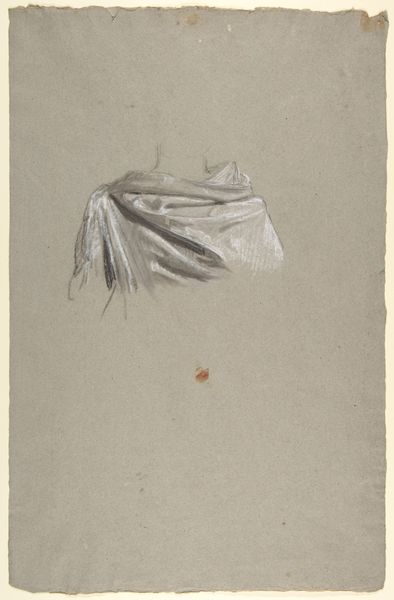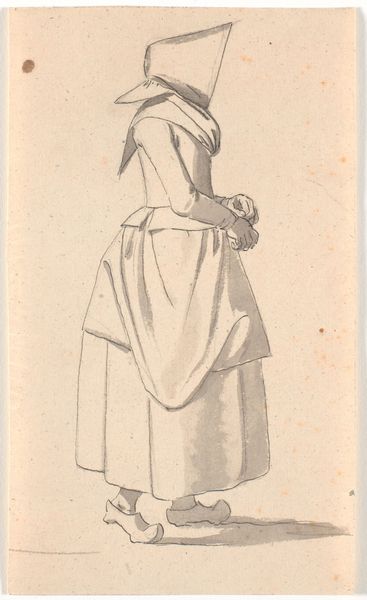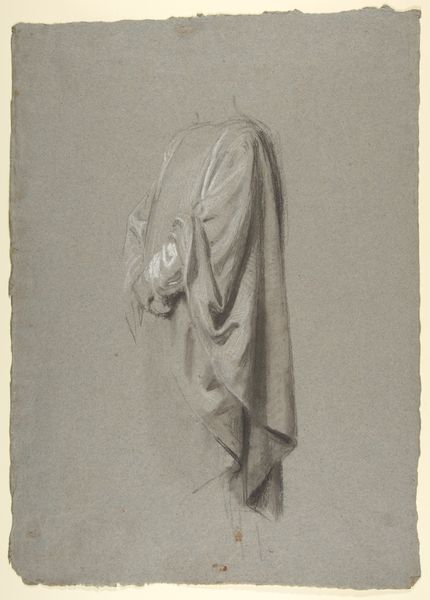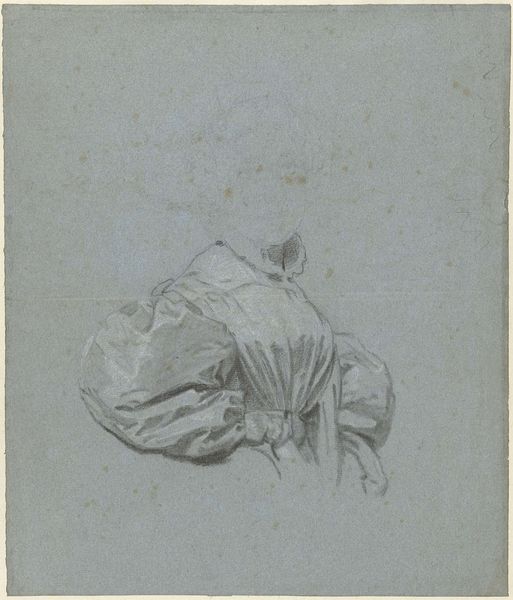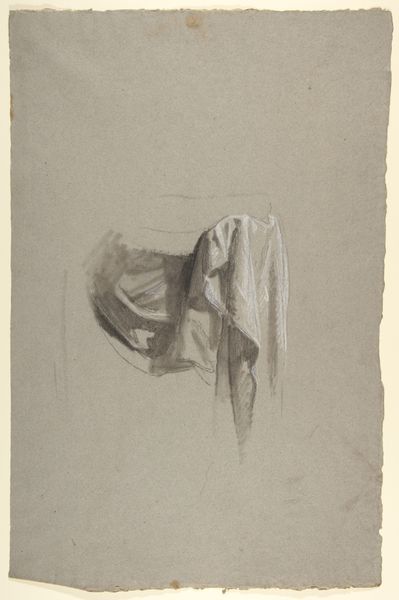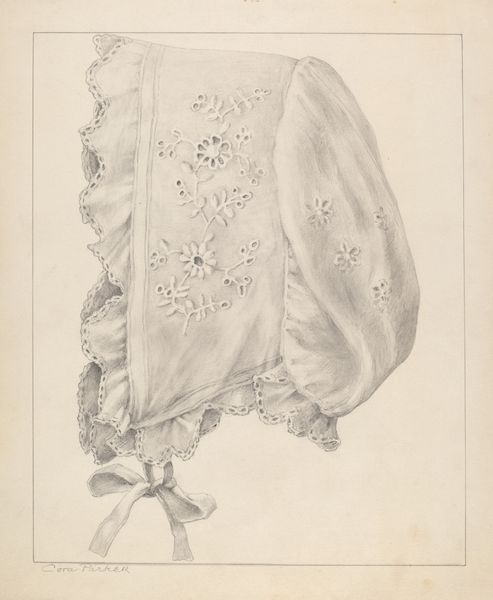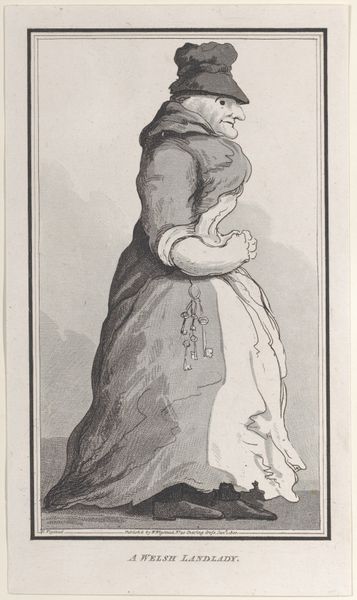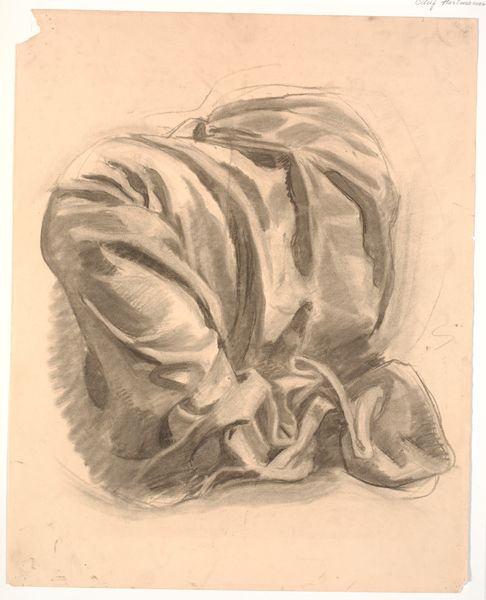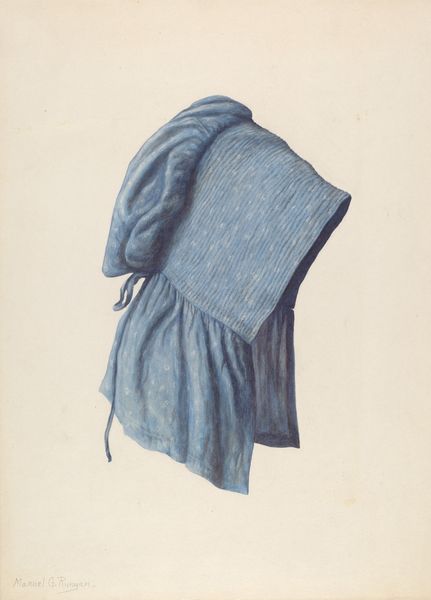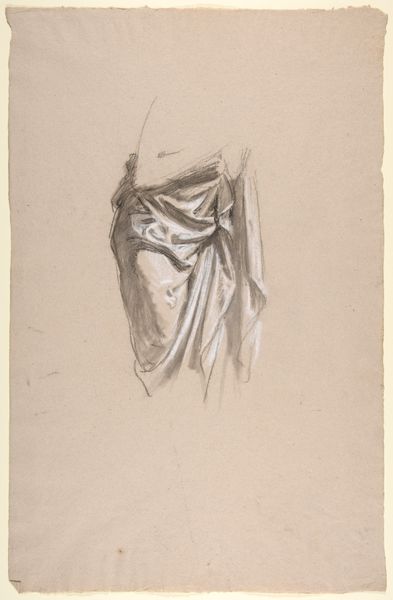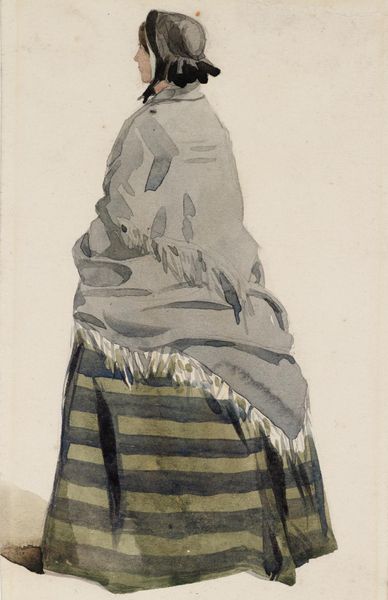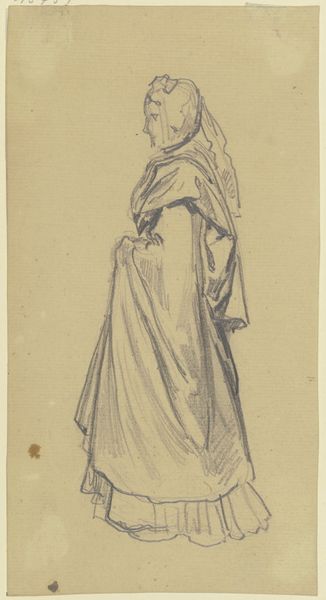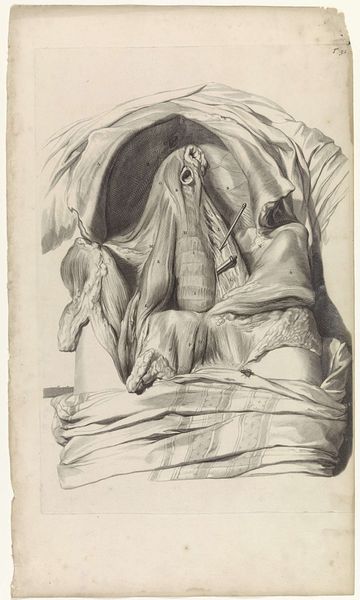
Kunstnerens hustru, siddende med sit strikketøj, i grøn changerende kjole, ansigt og hænder kun skitseret med blyant. 1850s
0:00
0:00
Dimensions: 346 mm (height) x 245 mm (width) (bladmaal)
Curator: We're looking at a pencil drawing by P.C. Skovgaard from the 1850s, entitled "Kunstnerens hustru, siddende med sit strikketøj, i grøn changerende kjole, ansigt og hænder kun skitseret med blyant" which translates to "The artist's wife, sitting with her knitting, in a green iridescent dress, face and hands only sketched in pencil." It's currently housed at the SMK, the National Gallery of Denmark. Editor: What immediately strikes me is the unfinished quality, almost like a glimpse behind the curtain of a formal portrait. The green dress, rendered in such detail, contrasts starkly with the ghost-like face. It lends a strange sense of detachment. Curator: It's a genre painting offering us insight into the artist's domestic sphere, while the very act of knitting reflects gendered expectations and labour. The choice of leaving the face and hands unfinished arguably says much about the limited recognition afforded to women’s work. It asks what it meant to be visible or invisible at the time? Editor: Absolutely. The drapery of the dress, however, seems to command most of the artist’s attention. Note the intricate play of light and shadow. The fabric’s texture almost feels tangible and semiotic analysis reveals a very traditional reading. This choice in highlighting, in contrast to her expressionless rendering speaks of a deep formalism at play. Curator: I read it somewhat differently. The era was filled with societal restrictions upon women and perhaps that is reflective in this work by portraying the wife and women as less expressive in the society. By not depicting the wife's face and leaving it without true substance gives more meaning when exploring ideas and theories of intersectional feminism. What is he truly trying to say? Editor: Regardless of intent, I think the technique contributes to the mood. There's a serenity and stillness, an almost melancholic quiet, enhanced by the limited palette and the unfinished elements. It invites you to contemplate the liminal space between completion and incompletion in portraiture, life, and even identities. Curator: Yes, it is definitely an artwork that holds within it stories from both art history and today, provoking thoughtful ideas when faced with contemporary thought. Editor: Precisely, a confluence of visual choices shaping a captivating experience for us observers today.
Comments
No comments
Be the first to comment and join the conversation on the ultimate creative platform.
